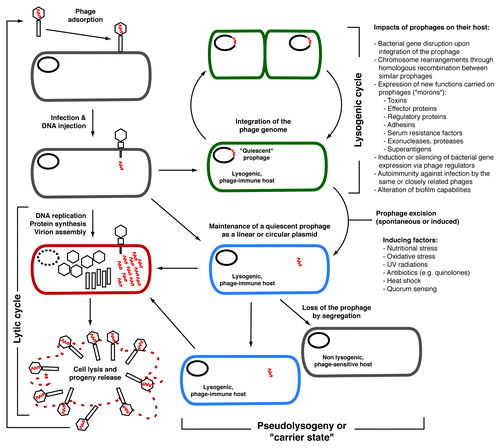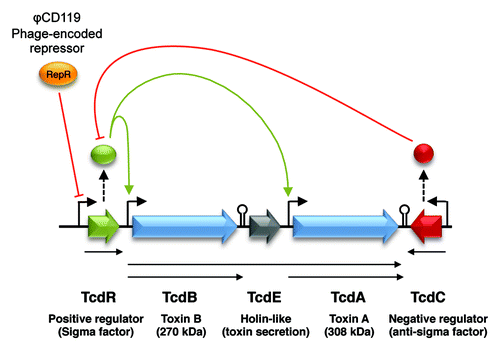Figures & data
Figure 1. Different lifestyles adopted by phages. True virulent phages will only follow the lytic cycle for their replication and will lead to the lysis of the host cell at the end of the cycle. Temperate phages have the choice to replicate through the lytic cycle like virulent phages, or they can opt for the lysogenic cycle. In most cases of lysogeny, the phage integrates its genome into the host bacterial chromosome and remains quiescent. The prophage DNA is replicated along with the bacterial chromosome and is transmitted to daughter cells. Lysogeny can sometimes have significant impacts on the host (lysogenic conversion).Citation9 Under certain conditions, including various stresses causing DNA damages, the prophage is excised and initiates a lytic cycle. Some phages also adopt a pseudotemperate lifestyle, i.e., they generally do not integrate the chromosome of their host and replicate as linear or circular plasmids within the cytoplasm. Sometimes, the phage genome is lost during cell division and segregation, which is characterized by instability of the lysogens carrying these phages. Note that chronic infections by non-lytic phages (e.g., filamentous phages such as V. cholerae CTXϕ) are not represented on this figure.Citation147

Figure 2. Organization of the pathogenicity locus (PaLoc) in C. difficile. Arrowheads indicate a positive effect on the target and blunt ended lines indicate repression of the target. Phage ϕCD119 expresses a repressor that binds to the promoter region of TcdR, thereby repressing transcription of tcdR and hence, transcription of the toxin genes.Citation103
